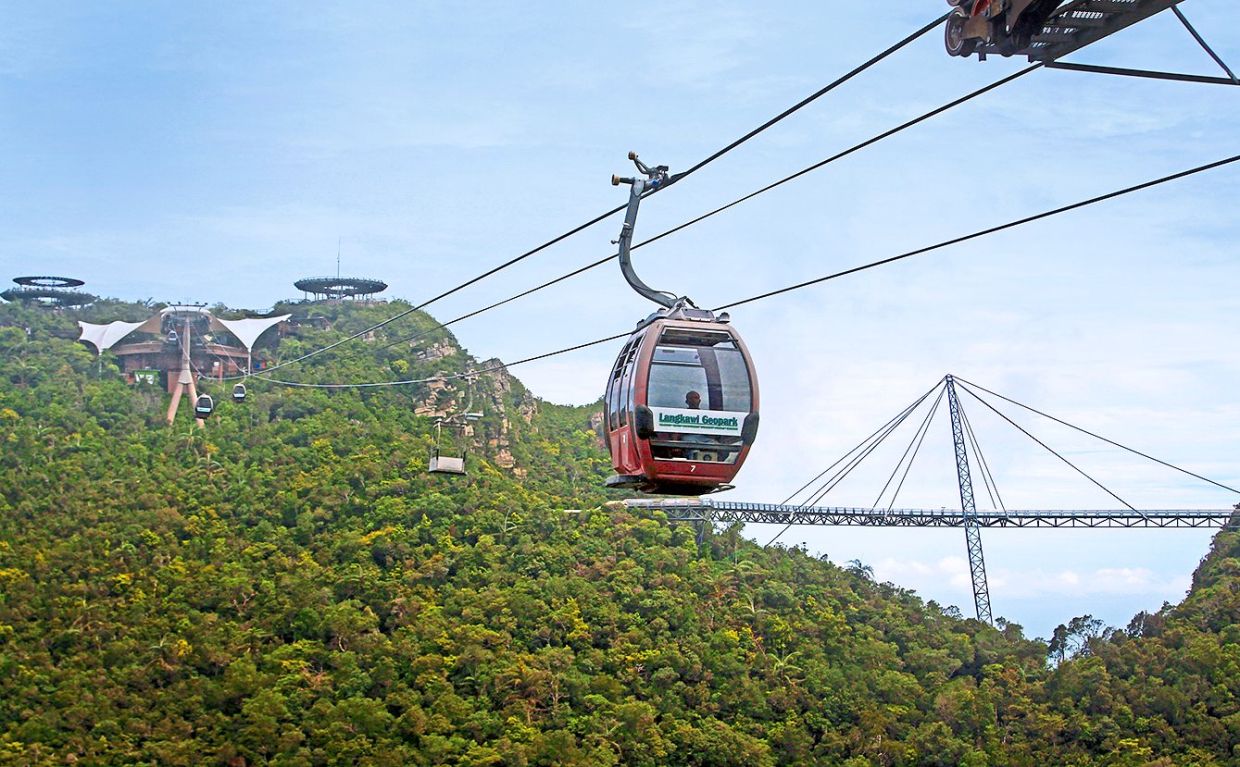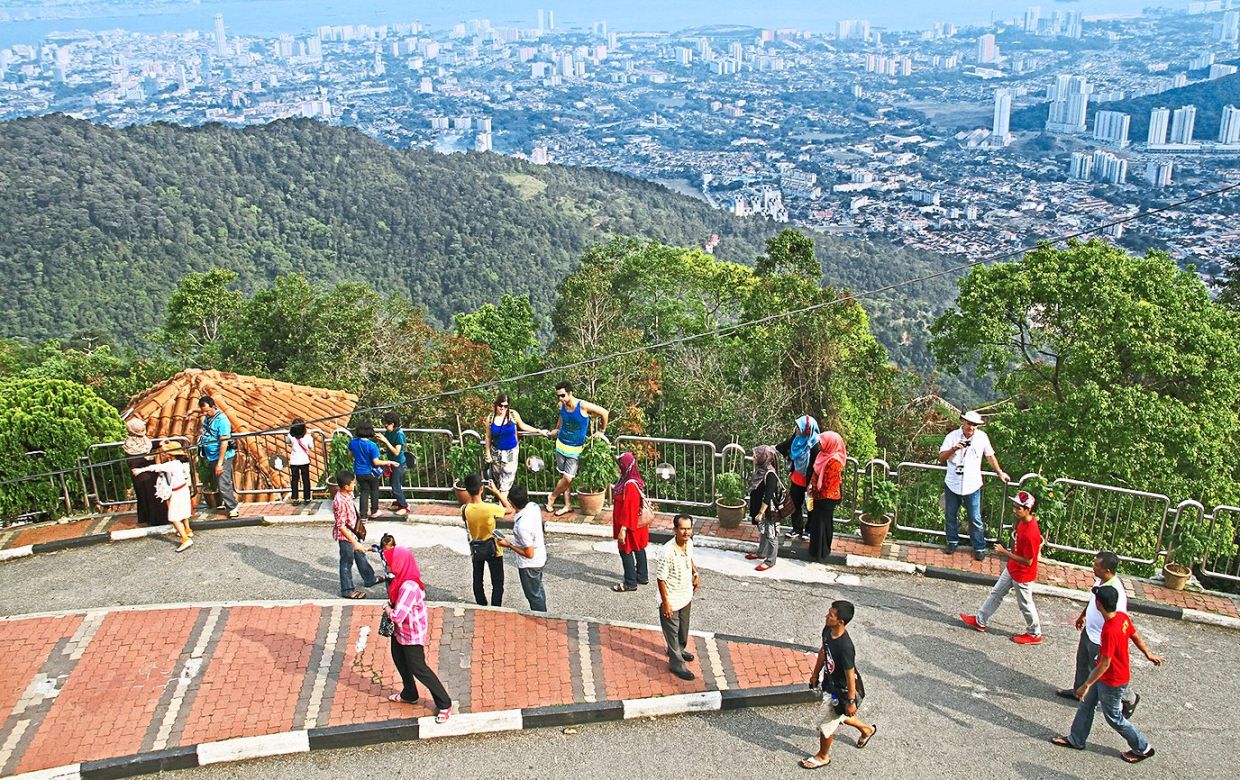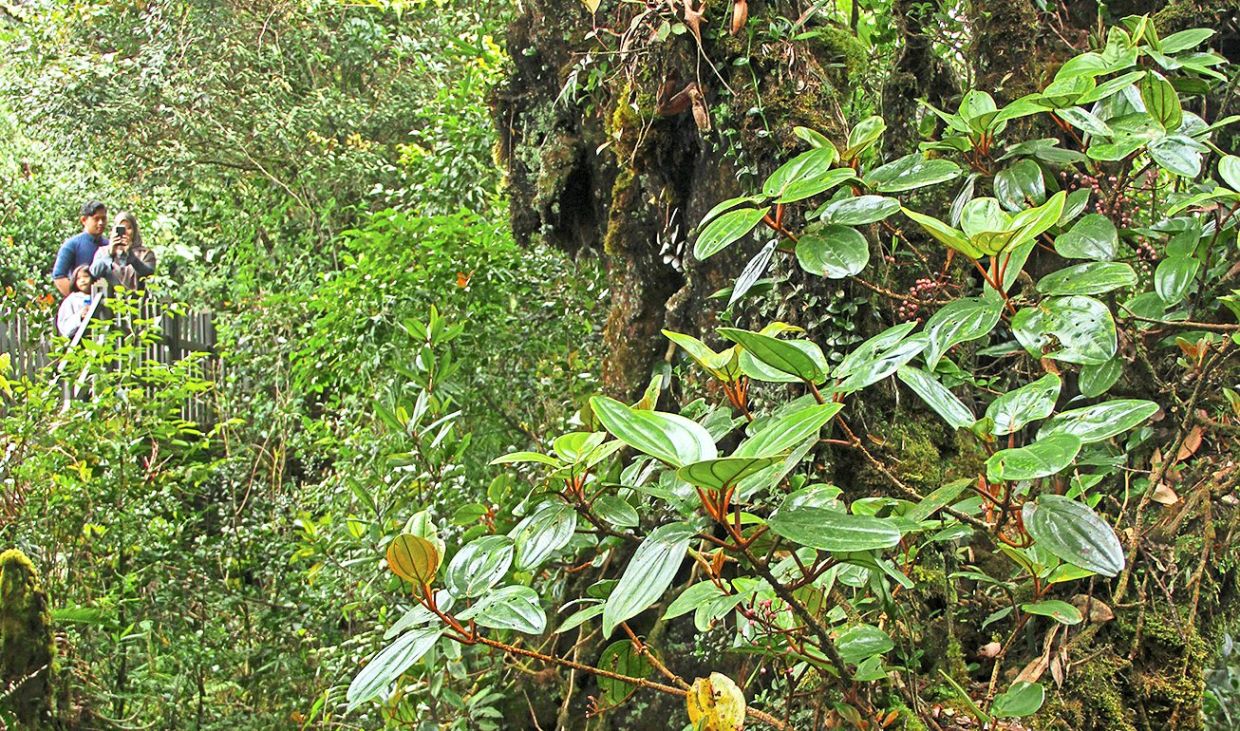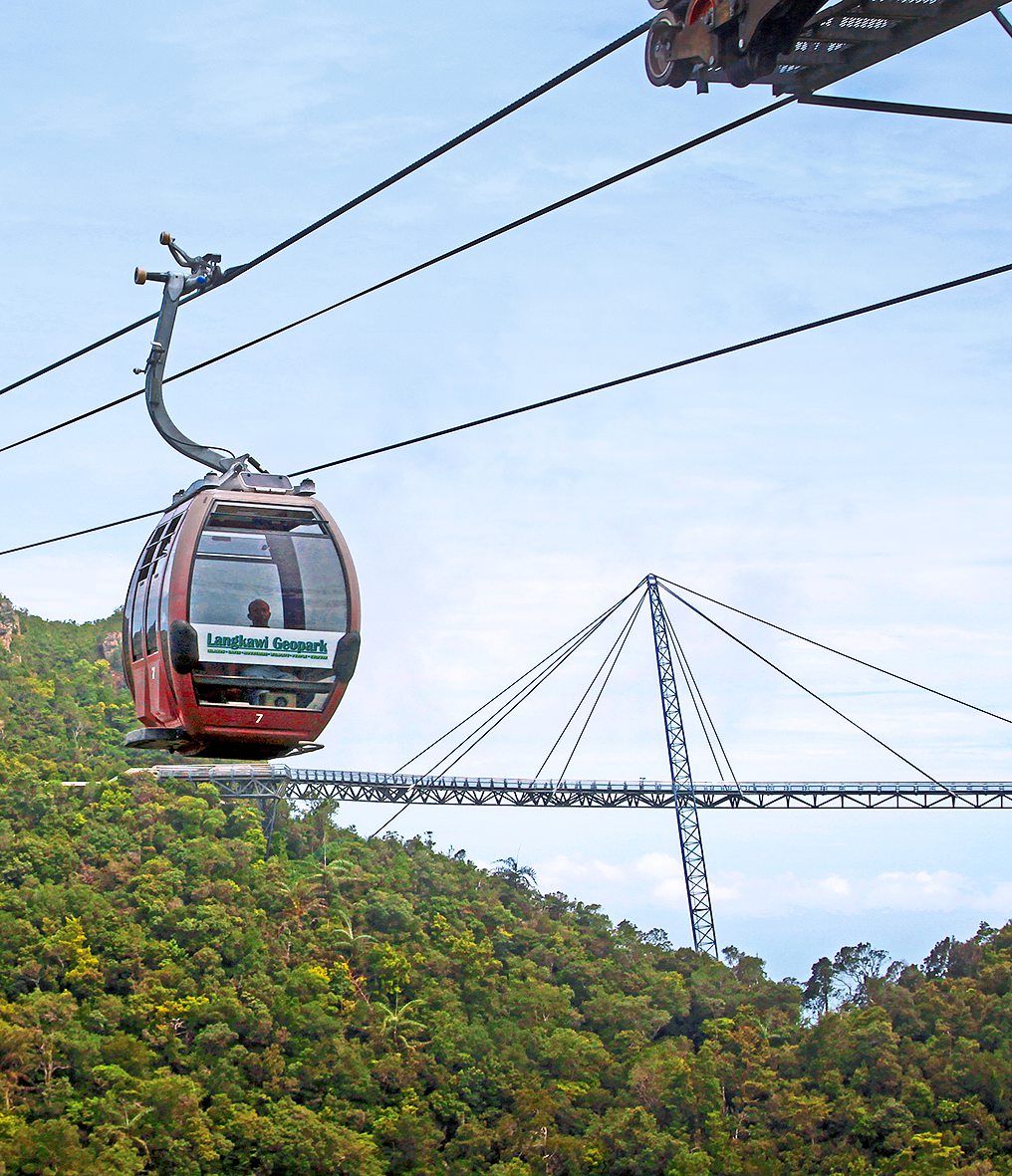Mount Kinabalu is visible from many parts including the islands near Kota Kinabalu city. -- Photos: DAVID BOWDEN
In 2003, the United Nations declared that Dec 11 would be recognised as International Mountain Day. With the world celebrating so many “days”, like World Naked Day (Feb 4), World Mosquito Day (Aug 20), and World Book Day (April 23), International Mountain Day could easily have come and gone before the world paid it the attention it deserves.
However, UN backing has enabled the day’s prolonged existence, especially with its focus not just on the physicality of mountains but also on sustainable development, the inclusion of minority groups, and alleviating poverty for those whose lives are dependent on mountains.
Mountains really are important, as at least 15% of the world’s population lives in and around them, and is dependent upon them.
Some mountains, such as Mount Everest in the Himalayas – the world’s highest peak at 8,849m – have attracted adventurous tourists seeking to climb to their summits, as well as mainstream tourists who simply want to admire their majestic outlines.
People choose to live in such locations for several reasons, including the availability of fertile soil, clean water and cool weather. However, most importantly, many often have no choice but to live in the mountains because they were born there and have no financial means of leaving the place.
Life there is not always easy, though, as mountain residents often have to endure volcanic eruptions, earthquakes, landslides, avalanches, mudslides, and adverse weather.
Mountain or hill?
For many years, Malaysians were led to believe that Mount Kinabalu, standing at 4,095m tall, was South-East Asia’s highest mountain. The misleading claim worked, and many were, and still are, lured to Sabah to make the two-day climb to the summit.
However, a search of the literature clearly indicates that there are many mountains in the region that are taller than Mount Kinabalu, which is actually the 28th highest in South-East Asia.
Furthermore, the top eight peaks in the region are all in Myanmar, with Gamlang Razi – at 5,870m – being the highest among them.
Mountains are important for tourism, and the challenge of ascending their lofty heights is regularly taken up by many.
While Malaysia is not overly mountainous, there are several mountains or hills that attract climbers and general sightseers. While thinking of these and developing a list, I pondered the difference between a mountain (gunung in Bahasa Malaysia) and a hill (bukit).
The first reference I unearthed suggested that a mountain was an elevated upland covered in snow, and, had I adopted this as a definition, my Malaysian list would indeed be very short (though snow and ice are occasionally recorded at the summit of Mount Kinabalu).
Then there was a reference that stated mountains were steep and hills were rounded. That too was challenging due to the difficulty in defining “steep” and “rounded”. Another stated that mountains were taller than hills, and while this gained acceptance, I wondered by how much?
The most appropriate definition I found was that mountains were elevated uplands exceeding 610m (or 2,000 feet), and hills were less than this.
So, here are 10 upland tourist destinations in Malaysia, from the highest to the lowest, to consider exploring on your next holiday.
Malaysia’s highest peak at 4,095m is a centre of biodiversity, with over 5,000 plant species identified within this 750km² park. While the challenge of a two-day climb to the summit attracts adventurous travellers, the cooler weather appeals to others who are content to relax around the park’s headquarters.
Kinabalu is a prominent mountain, and conquering its summit has long been on the travel itineraries of many visitors and locals. This volcanic remnant, comprising mostly granite, is exposed at the summit, where it is too cold for plants to survive.
Mount Kinabalu has special significance to the local Kadazan and Dusun people, many of whom work in the park. Visitors can stay in the park or in chalets in nearby Kundasang.
At 2,197m, Mount Tahan is Peninsular Malaysia’s highest peak. Located in Pahang near the Kelantan border, the summit ascent from Taman Negara is a demanding climb. Experienced and well-equipped climbers head off for the guided seven-day return trek, while others enter the park from Merapoh.
The staging point for this shorter but still multi-day walk is via the Sungai Relau Park Headquarters which is accessible by road, or for the adventurous, by trains on the East Coast railway.
Pahang’s Mount Brinchang (2,032m) is the highest Malaysian mountain that is accessible by road. However, the road isn’t in good condition so this deters many from making the attempt. Those who persevere are rewarded with views over tea estates and a short walk through the mossy forest.
This forest is limited in extent and is such a fragile ecosystem that an elevated boardwalk passing over the spongy forest floor has been installed. The forest is permanently damp due to low-lying cloud which makes its alternative name of cloud forest, easier to understand.
Pitcher plants, orchids, conifers and gnarled dwarfed trees are common here.
The Resorts World Genting development on Mount Ulu Kali at 1,800m is a mountain summit devoted to entertainment, recreation and tourism.
But did you know that the forest at Genting Highlands is said to be 130 million years old?
The forest is divided into three main sections: The Awana Bio Park sits at the “bottom” with an upper dipterocarp forest, followed by the Chin Swee Bio Park and its montane oak forest, and the highest, the Genting Bio Park, with its montane ericaceous forest.
There are several hiking trails you can go on – with official guides from Resorts World Awana – including the Awana Trail, Clearwater Way, Heritage Trail and Memorial Trail. The Dragonback Trail, said to be one of the toughest trails in the area, is scheduled to open in early 2024.
Of course, you can also enjoy the highlands in other ways. Visitors can take the long and winding road to the summit or ride the cable car that departs from Awana Skyway at Genting Highlands Premium Outlets.
Most visitors are attracted to the resort for its numerous dining, shopping and thrilling entertainment options. Accommodation ranges from the prestigious Crockfords Hotel to the First World Hotel, with over 7,000 rooms.
Interestingly, Fraser’s Hill is not just one “hill” as this old colonial outpost extends over several rolling hills. At an altitude of about 1,450m, Fraser’s Hill in Pahang was identified in the 1920s as a cool location for returned World War I soldiers to recuperate with Ye Olde Smokehouse initially a hospital. Soon after, public facilities, and private and government holiday bungalows followed.
In its day, Fraser’s Hill was a premiere Malayan holiday destination but times have changed and it is now locked in a quaint time warp.
The 1,175m-tall Mount Jerai peak on the Kedah coast overlooking the Straits of Malacca has been a beacon for navigation for centuries. For over 1,300 years, Kedah has been closely linked to ancient trade routes, as it was the first land contact for vessels that sailed on the trade winds from India.
The peak is visible from many kilometres away, including in Penang. There is a road to the summit, and from here, Langkawi Island and Penang are visible, rising above the fields of rice surrounding the mountain.
Jerai Hill Resort offers chalet accommodation, a pool and a restaurant.
Often regarded as the world’s first hill station, Penang Hill, at an altitude of 833m, became increasingly popular in the early 19th century as a cool venue and escape for colonialists. East India Company staff rode horses or were transferred up the hill in sedan chairs carried by coolies, apparently.
Now, a funicular railway ensures a quick ascent to the summit. In the early days, bungalows were erected across the upper reaches of the hill, and small hotels followed.
Mount Raya, Langkawi’s highest peak, is geologically different from the island’s second-highest mountain, Mat Chinchang or Machinchang. Mount Raya comprises granite, an igneous rock that formed 230 million years ago deep within the Earth’s surface. Later, plate tectonics forced the rocks to the surface.
Visitors can drive to the summit at 881m above sea level, while birdwatchers can admire soaring eagles and hornbills feeding in the rainforest canopy.
Mount Santubong stands at at 810m and is visible from many parts of Kuching, the Sarawak capital. In the 1850s, British naturalist Alfred Russel Wallace collected samples of the flora and fauna and worked on his evolutionary theories.
While climbing to Mount Santubong’s summit, adventurers can reflect on the scientific significance of the place. While its height is modest, the ascent isn’t easy, with near-vertical ladder climbs at the summit. Climbers need to be fit, well-prepared and well-equipped and to start early as the return walk takes most of the day.
Views over the Damai Peninsula, the South China Sea, and the Sarawak Cultural Village are the reward at the end of a strenuous climb.
Langkawi’s second-tallest peak at 713m is more developed than Mount Raya. Access is via what is considered one of the world’s steepest cable cars, with panoramic views over the island and even into neighbouring Thailand.
While most visitors travel up and back on the cable car, the adventurous may want to walk, with the trek down being the preferred direction. The cable car journey commences at Oriental Village, where shops and restaurants add to the fun. From the top station, visitors can walk across a skybridge over a deep, rocky and forested gorge.
South-East Asia’s 10 Highest Peaks
- Gamlang Razi, 5,870m (Myanmar)
- Peak 5710, 5,710m (Myanmar)
- Dindaw Razi, 5,464m (Myanmar)
- Tasudo Razi, 5,140m (Myanmar)
- Tami Razi, 5,101m (Myanmar)
- Sheankali Razi, 5,000m (Myanmar)
- Romaing Razi, 4,900m (Myanmar)
- Puncak Jaya, 4,884m (Indonesia)
- Sumantri, 4,870m (Indonesia
- Ngga Pulu, 4,862m (Indonesia)
Malaysia’s 10 Highest Peaks
- Mount Kinabalu, 4,095m (Sabah)
- Mount Trusmadi, 2,642m (Sabah)
- Mount Sinsing, 2,603m (Sabah)
- Mount Tambuyukon, 2,579m (Sabah)
- Mount Kaingaran, 2,468m (Sabah)
- Mount Murud, 2,424m (Sarawak)
- Mount Mulu, 2,376m (Sarawak)
- Mount Tahan, 2,187m (Pahang)
- Mount Korbu, 2,183m (Perak)
- Mount Yong Belar, 2,181m (Kelantan)


















